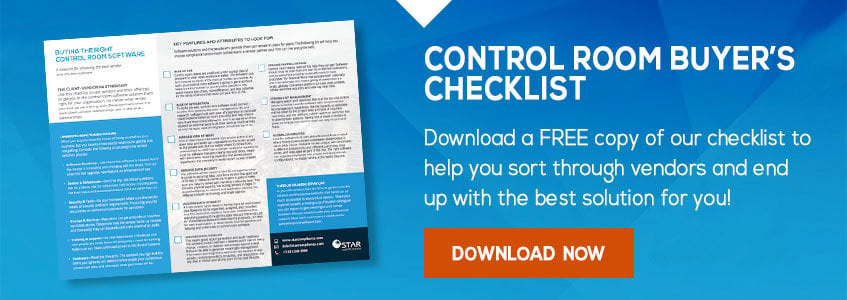4 Ways To Know You Need To Automate Your Control Room
If you’re still not convinced of the benefits of automation, or are dealing with doubters elsewhere in the organization, this blog can help
Control rooms are an enterprise financial firm’s nerve center. The nexus through which all deal-related data must pass to be organized, analyzed, and recorded. But as important to the safe and profitable operation of company as they are, control rooms are typically run with a skeleton crew: maybe five or six people, responsible for keeping potential conflicts of interest in check for hundreds or even thousands of deals, all simultaneously in motion and with all the crisscrossing data that activity implies.
Safe and profitable. There’s the rub. Deals must be cleared quickly, so business isn’t lost. But speediness mustn’t compromise diligence: making sure no internal or external lines are crossed that shouldn’t be. It’s the battle control room teams fight every day, armed perhaps only with spreadsheets and email chains. But winning this 21st century war with 20th century weapons is getting more and more difficult. Regulation is on the rise globally, more and more deals are being done across borders and trading blocs, and financial institutions themselves are operating at an increasingly complex level.
Automation can help. We promise. But if you’re still not entirely convinced, or are perhaps looking for a few more talking points to put before firm leadership, the following may help.
1. INCREASED TURNOVER
Control room teams are the elite of the compliance world. In terms of frontline operators, they typically have more experience than anyone else in the department. Their job is high profile and their performance very much a focus of upper management, due to the fact a firm’s deal side is traditionally a significant profit center. Again, this small group is under big pressure to clear deals quickly and safely.
If you’re seeing turnover in your control room team, more than you’re used to or more than you want, automation can make all the difference. The right control room software will organize the torrent of information coming in, automate the most time consuming and mind numbing aspects of managing it, and allow your high performers to do the higher cognition work they ought to be doing anyway.
2. INCREASED VIOLATIONS
An obvious one, but one no doubt worth a little extra rumination time. If you’re hearing more and more from regulators on the kinds of things you don’t want to hear about, it might be a sign your control room has, well, lost control. And if you’re confident in the people staffing the control room, it’s worth considering whether they’re taxed to the point they can’t do their jobs.
Or even if they don’t seem overtaxed, it could be that whatever manual or semi-manual control room “system” is in place isn’t providing them with the information they need, in the proper format, to do what they need to do. Sizable firms have a surfeit of zigzagging deal data that needs to be corralled and catalogued. But even smaller firms need to keep a close eye on watch lists and restricted lists. Control room software isn’t just for the big investment banks anymore.
3. FEWER DONE DEALS
Again, for a big bank or similarly large-scale financial institution, the deal side can be a big profit center. Deals must be cleared with diligence, but also quickly. Your deal teams are very likely in competition with deal teams from other firms—all working against the clock to put together the best deal for a client in a specified time frame, or perhaps just as quickly as possible.
Because the clock is ticking for the deal team, it’s also ticking for the control room team. Good control room software will not only remove the worst of the manual burden your control room team is facing in sorting through the facts at hand, but also provide the most complete picture of the situation. So if your firm has seen a decrease in the number of deals successfully completed, the right software could turn things around.
4. UNUSUALLY PAINFUL AUDITS
Audits, or regulatory exams, are certainly never a welcome occurrence, but they don’t have to be the ordeals they sometimes are. A comprehensive auditing and reporting suite will be part and parcel of any good control room software package. Such a suite will maintain a detailed audit trail for every creation, change, or deletion event against a deal. It will generate meaningful management information and insightful analytics on every key aspect of deal activity, including conflicts, breaches, and resolutions.
And it will be eternally audit ready, at any point in the deal lifecycle. This capability would apply to internal as well as external audits. Control room software with good recordkeeping capacity can also offer increased peace of mind to control room employees, i.e., the ability to understand the particulars of how a deal was handled can provide visibility into not just a job poorly done but also a job well done.



